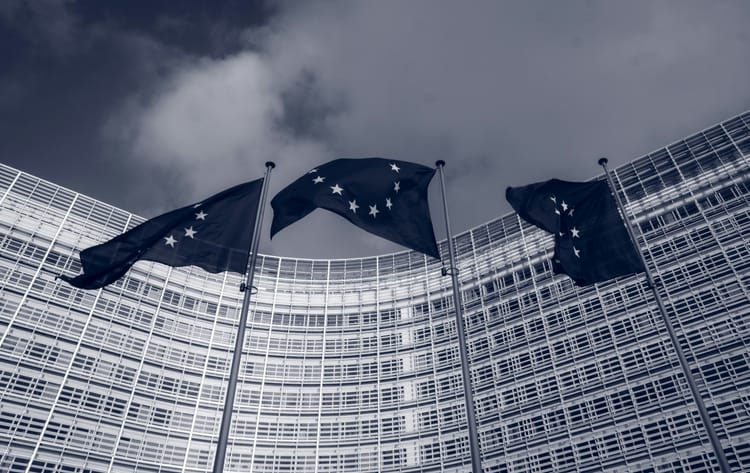Sustainability leaders have a chance to act “while the clay is soft” on compliance

Chief Sustainability Officers should use looming climate disclosure requirements as a way to engage stakeholders across the C-Suite and embed sustainability more deeply into operations, according to seasoned sustainability leaders.
Upcoming compliance obligations are a great way to spark people’s interest in the topic “while the clay is soft”, according to Harry Broadman, a non-executive director and White House veteran now driving sustainability initiatives on several boards. He believes that CSOs should increasingly be playing the role of “integrator in chief”: bringing everyone together around the disclosure process and operational sustainability as pressure from regulators and investors mounts.
This transition period is a unique chance to get CEOs, boards of directors and relevant department managers involved in sustainability conversations and improve buy-in – one of the top challenges shared by CSOs.
But on a call with CSO Futures, Broadman warned that “there are very few Chief Sustainability Officers that I've come in contact with, who have that authority and recognition, within the firm and on the board”. The danger, then, is for CSOs to fall into the “trap” of looking at disclosures as “a mechanical process”.
A focus on retrospective measurement at the expense of meaningful strategic action would jeopardise sustainability efforts for companies and potentially expose them to the risks of a growing ESG reporting software market. According to Mike Penrose, founder of sustainability platform FuturePlus, there’s going to be “a mass casualty rate of ESG measurement providers in the near future,” because the majority of them don’t support sustainable business transformation.
Chief Sustainability Officers must look beyond the disclosure burden
The suggestion of both – interviewed this week as part of CSO Futures’ ongoing work looking at the future and potential of the Chief Sustainability Officer role – is that whether CSOs view climate disclosures as a compliance burden or as an opportunity says a lot about how embedded sustainability is within their organisations – but also about their own level of influence as CSOs.
“[Chief Sustainability Officers] whose entire job is to comply with regulations and not improve processes will spend an inordinate amount of time extracting more and more data in order to comply. But the problem is not the regulation, the problem is the processes that they have internally,” Penrose explains.
Sustainability directors are showing increasing concern around the amount of disclosures with which they will soon be expected to comply, and understandably so: mandatory sustainability reporting is set to increase dramatically within the next three years.
In Europe, the Corporate Sustainability Reporting Directive is coming into force next year, with the first reports due in early 2025 – though sector-specific alignment with the European Sustainability Reporting Standards (ESRS) may be delayed to 2026.
In the US, California’s climate disclosure laws will require public and private companies to submit their first reports in 2026 for the 2025 fiscal year. At the federal level, the Securities and Exchange Commission is expected to publish its own climate disclosure rule, which will apply to all public companies, in the near future (though there are some expected delays there as well).
One head of sustainability has estimated that reporting in line with the ESRS would take more than 300 hours of work – a number that “rings alarm bells “ for Penrose. “I always get a little sceptical when I hear people say disclosures take so long: they only ever take so long in organisations that aren't actually embedding it into operations, because they have to go and find data related to non-sustainable activities,” he says.
Sustainability reporting tools… and their limits
The workload associated with climate disclosures may also depend on the size, maturity – and budget – of sustainability teams. According to the Thomson Reuters State of Corporate ESG 2023 report, large companies are investing heavily in technological solutions that help them comply with these new requirements: 91% of companies surveyed (of which three-quarters have revenues of more than US$1 billion) already use “third-party solutions related to ESG management”.
But Penrose believes many of these providers are set to disappear as corporate sustainability matures: “They are founded on the basis of ‘I will make your reporting easier’. When you do that you fall into that same problem in that they're trying to extract data from inherently non-sustainable processes, or processes that have no intention of becoming more sustainable. So it's fighting against itself.”
The Thomson Reuters survey appears to confirm growing concerns from the business community around ESG measurement tools, saying that “companies are looking for honesty and transparency around what can and can’t be delivered by solutions providers, which is particularly important given the risks now at stake”.
What this trend signals is that companies and their sustainability directors are realising that there is no silver bullet for climate disclosure compliance – it requires the true integration of sustainability into operations.
“If you build sustainability at [the company’s] core, reporting is actually easy. If you try and report on unsustainable practices and processes, it's really hard,” summarises Penrose.
From a rearview mirror exercise to a future-focused strategy
It’s difficult to make any generalisations on companies’ sustainability strategies, partly because most CSOs are new to their role and come from a wide variety of backgrounds – which significantly influences how they approach their duties. But new initiatives are attempting to assess which behaviours bring the greatest impacts and create industry benchmarks for companies to compare themselves with their peers.
One of those is ESG Exchange, a new non-profit that Broadman, who sits on its board, describes as a “crowdsourcing wiki process among various stakeholders about how to grapple with the various reporting standards.” “It's brand new, but if we do our job right, it will help facilitate building consensus within a company and among companies,” he says.
Perhaps the most important – and most tricky – step in making disclosures work for deep sustainability transformation is to move past the backward-looking exercise of reporting and start looking forward instead.
“Switch towards a future perspective and start looking at how you integrate [sustainability] into your operation, start collecting data against your objectives, not just reengineering historical data. Then you will automatically generate the stuff you need for compliance,” says Penrose, whose aptly-named platform FuturePlus helps clients set objectives and measure progress against them.
Broadman agrees “there’s got to be a feedback loop” between retrospective disclosures and future-looking strategies, though he warns that “that's a heavy lift within any organisation”.







Member discussion